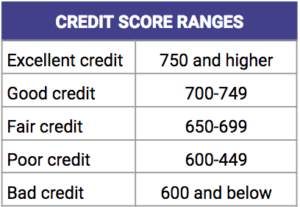
Many products and services are offered by credit card companies. Online comparisons are the best way to compare them. Sites can be found that assess different products and classify them according to the main functions. You can also use these websites to find student credit cards. These will list the rates and benefits. These websites can help you compare credit cards and get an idea of their pros and cons.
Interest charges vary widely from card issuer to card issuer
Your credit card issuer may have different interest rates. Some issuers may charge "teaser charges" (zero percent for the first month) while others can charge up to 40% for the remainder. Individual states may also set interest rates. There may be a wide range of rates in states such as South Dakota or Delaware, where there is no interest rate limit and Delaware has weak usury laws.
Different creditworthiness levels may have different interest rates. Some cards may have a higher rate for borrowers with lower credit, while others have lower rates for those with higher credit scores. The prime rate which banks charge to credit-worthy customers determines the interest rates that you pay.

The interest rates charged by different card issuers vary greatly.
Although the average interest rate for credit cards is subject to change, it is typically around 17% in the first half 2019. NerdWallet reports that interest rates for credit cards are determined by credit scores. A higher credit score is associated with lower rates. Consumers with better credit are more likely to repay their debts.
A new regulation governing credit card fees has led banks to increase their interest rates and others to raise fees. The Federal Reserve recommends that consumers compare the fees associated to credit cards and do some research on them.
Benefits of a Balance Transfer Credit Card
Balance transfers are a great way of improving your credit score. But, they can take time to show results. In the event that you fail to make a payment on time, you can end up with more debt and an increase in your debt-to-credit ratio. In addition, a balance transfer will have a negative impact on your credit history and can even result in an increase in your interest rate.
A balance transfer allows you to move your credit card balance onto a card that has a lower interest rate. This will reduce your monthly payments, and allow you to pay off your balance more quickly. Many balance transfer credit cards offer introductory periods with 0% APR. These rates can last from 12 to 21 months.

Interest costs on credit card loans
The interest cost of credit card loans can vary depending on how much you borrowed and what type of balance transfer or purchase you made. Your credit score and credit card issuer may affect the interest rate you pay on your credit card. The APR, or annual percentage rate, is a measure of interest expenses over the course of a year.
You must pay interest on credit cards as an ongoing expense. Most issuers calculate interest expenses as an annual percent rate (APR), which can be found in the terms and condition. The APR can vary depending on federal rates. Credit CARD Act of 2009 forbids issuers to increase the rate without prior notice.